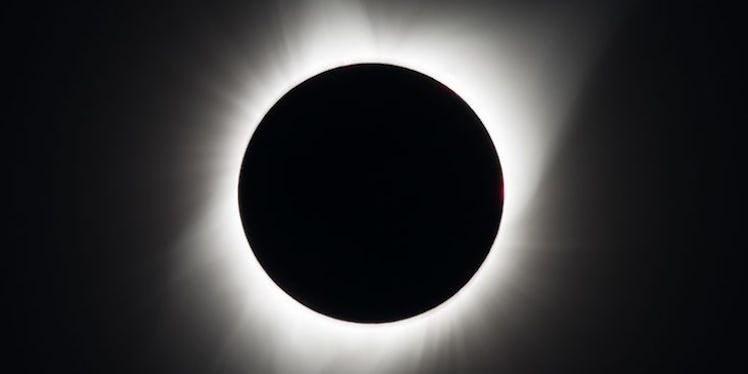
Here's Why The Corona Is Actually The Most Spectacular Part Of The Eclipse
It's finally here, you guys: the day of the 2017 solar eclipse, where our entire world drowns in the darkness it deserves. Lol, just kidding. Sorry to make things dark all of a sudden. (Oops, sorry again.) ANYWAY, the eclipse is sweeping across the nation (literally), but before you run outside with your eclipse glasses to go watch it, you have to make sure you don't miss the very best part: the eclipse corona.
What is the eclipse corona, you ask? Allow me to bestow my newfound eclipse wisdom (seriously, I found it about 30 minutes ago) upon you. For starters, "corona" means "crown" in Latin, so that might give you a little hint as to wait the corona might be in the case of the solar eclipse. Basically, the sun is surrounded by an atmosphere of plasma, or really hot gas. (This atmosphere surrounds other stars as well.) This atmosphere gives off a pretty wild "crown" of light around the sun, and it actually extends pretty far — seriously, like, thousands of kilometers beyond the sun.
On any regular day, the sun's corona isn't visible because the surface of the sun itself is so goddamn bright. This is why the corona is the best part of the eclipse. During a total solar eclipse, the moon passing between the Earth and the sun briefly blocks out the sun's bright-ass surface, leaving what looks like a shining halo — the corona — around the blacked-out sun.
Now, this will be easiest to see if you're in the path of the total eclipse, where the sun is entirely blocked out by the moon. If you look at the eclipse (THROUGH YOUR REGULATION ECLIPSE GLASSES, PLEASE DON'T BLIND YOURSELF), you should be able to see a bright circle of light rays around the eclipsed sun. If you do, congratulations! You've witnessed arguably the coolest part of the eclipse.
If you're wondering what else is so cool about the sun's corona, it has to do with the fact that the sun's magnetic fields create what look like loops and streamers off of the sun's surface, as it reacts with particles in the corona itself. Though you can't exactly see these loops and streamers with regular old glasses during an eclipse, there are ways to see it with special telescopes that us lay people probably can't afford.
So if you haven't seen the eclipse just yet, get out there and — SAFELY, FOR THE LOVE OF YOUR EYESIGHT — look for the eclipse corona during the eclipse. It's a sight you don't want to miss.